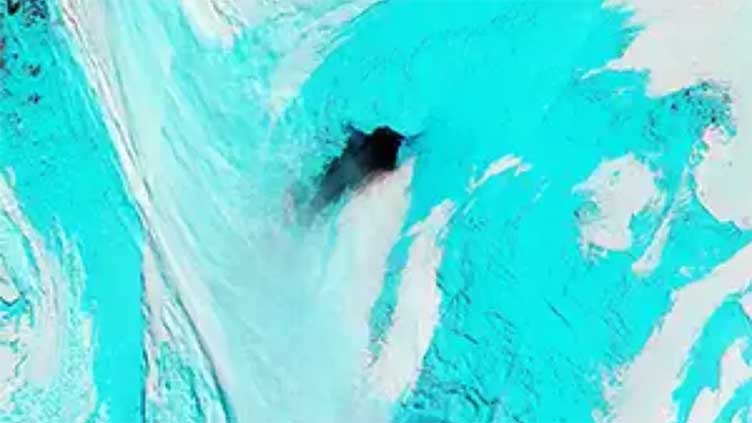Antarctica's 40-year mystery: scientists reveal what caused reappearance of hole

WeirdNews
This upwelling helps to explain how the sea ice might melt
(Web Desk) - When a massive hole opened up in Antarctica's winter sea ice a few years back, Nasa scientists could not believe what they were seeing.
The gap stayed for several more months and swelled to the size of Switzerland a year later. The hole was located hundreds of miles from the shoreline above a submerged plateau named Maud Rise. Once the hole closed, scientists decided to study it and found that the 4,600 foot tall seamount helped create it, also known as a polynya.
In the 1970s, when remote sensing satellites were first launched, they spotted a Maud Rise polynya. From 1974 to 1976, it became a regular feature, and scientists thought it would develop every year. But that did not happen. Then, to everybody's surprise, the hole in the Antarctic ice sheet made a reappearance in 2017.
The study was published in Science Advances. Aditya Narayanan of the University of Southampton, lead author of the study, says, "2017 was the first time that we’ve had such a large and long lived polynya in the Weddell Sea since the 1970s."
They found that the Weddell Gyre, a gyre located in the Weddell Sea that rotates clockwise, started spinning at a faster rate. This brought a deep layer of warm, salty water nearer towards the surface and softened the ice from below.
“This upwelling helps to explain how the sea ice might melt. But as sea ice melts, this leads to a freshening of the surface water, which should in turn put a stop to the mixing,” Fabien Roquet, a Professor in Physical Oceanography at the University of Gothenburg and co-author of the research, stated.
So they were sure that something else was also going on, and "there must be an additional input of salt from somewhere." Extratropical storms played a part in the process as winds moved sea ice outward and briny water flowed towards Maud Rise. Atmospheric rivers added warmth from above. The final factor was a process called Ekman transport.
It states that when wind blows across the ocean, surface flow is deflected by roughly 90 degrees because of the Earth’s rotation. The researchers created a model that showed the flow led to the salt laden water coming onto the exact place where the hole opened up in 2017 on Maud Rise.
The process of creating the hole was facilitated by the storms that moved the ice and pushed the right water into the right spot. The hole finally froze again in September.


